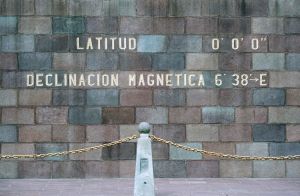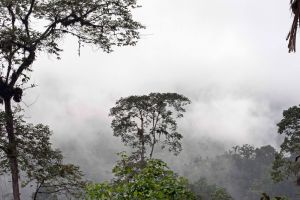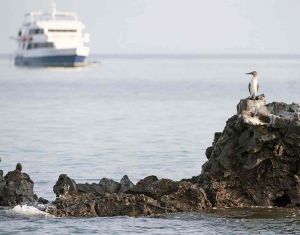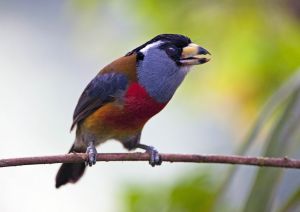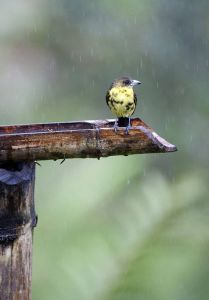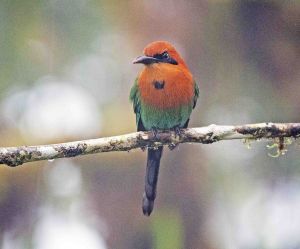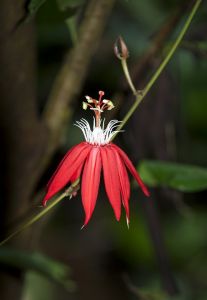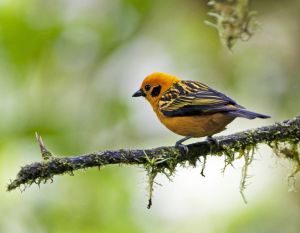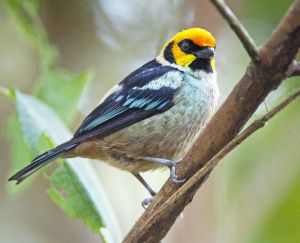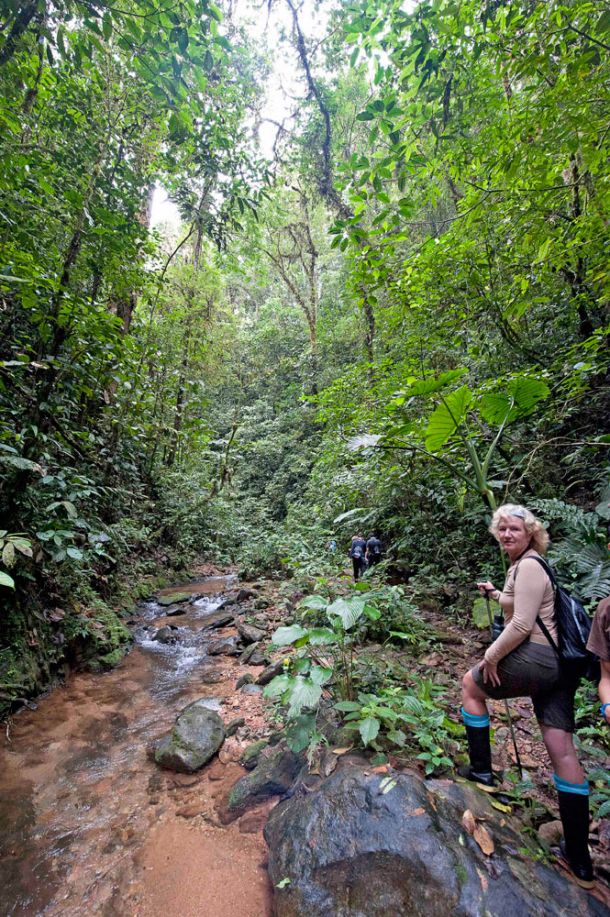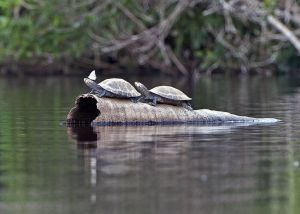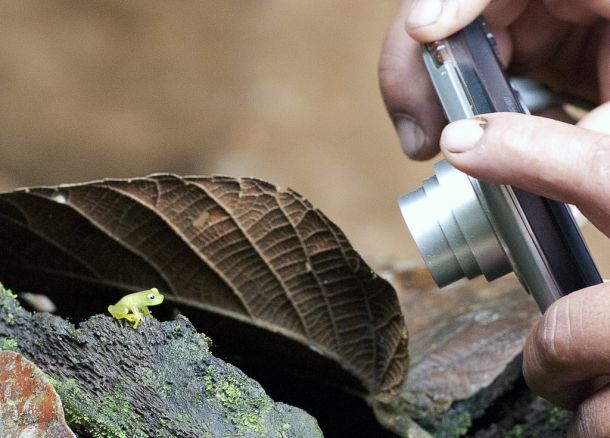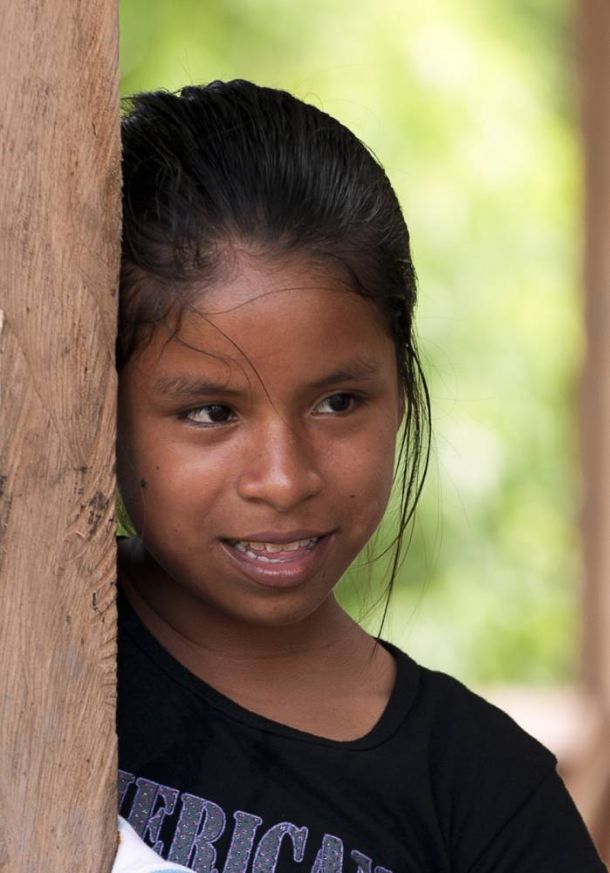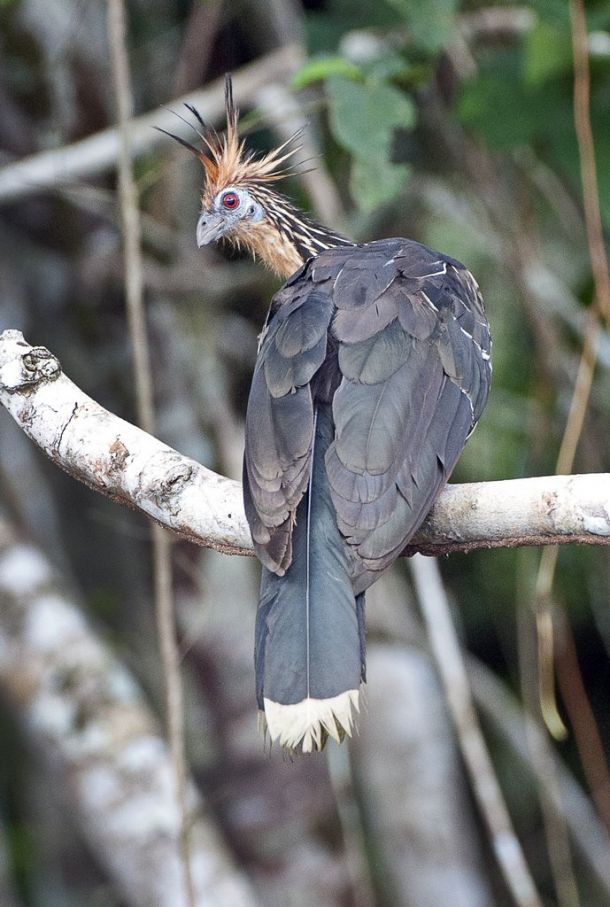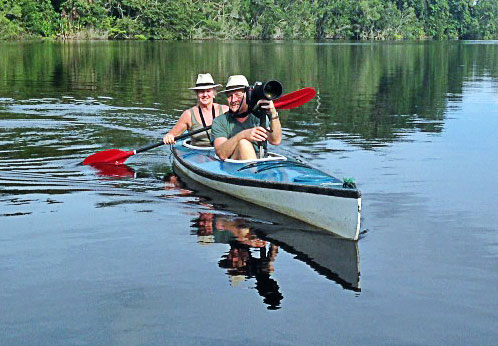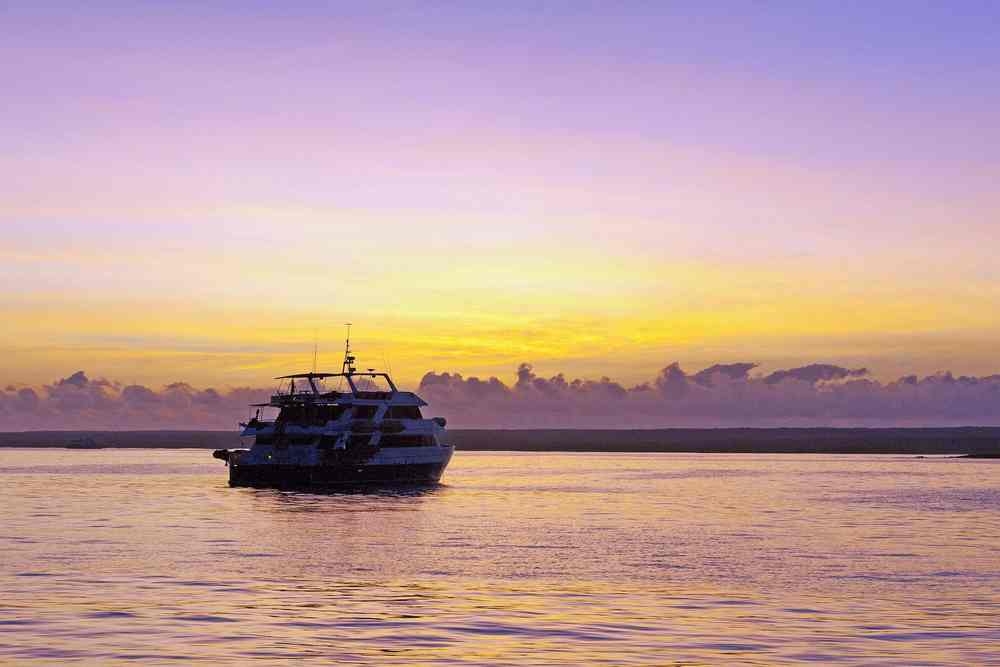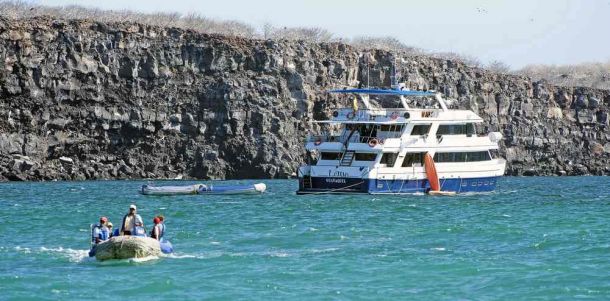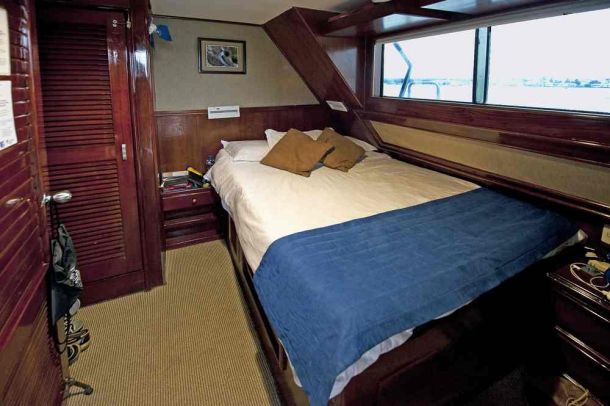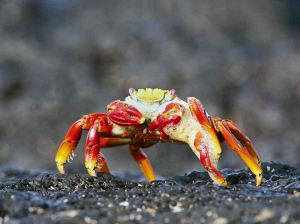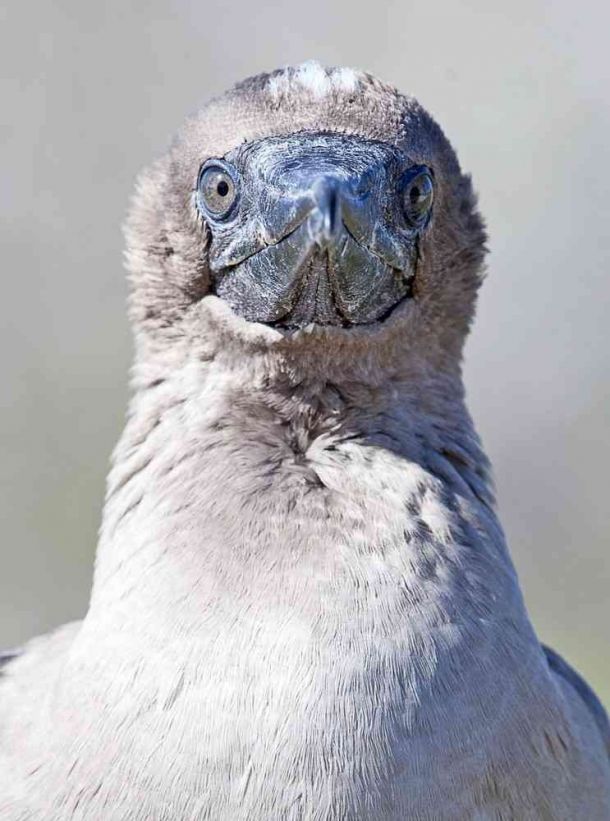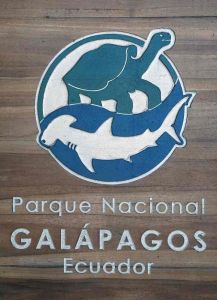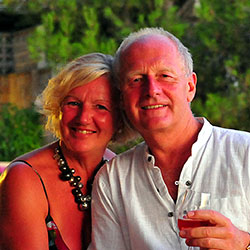Galapagos surely has to be on every adventurer’s bucket list…and rightly so…but there are several ways to go about it depending on what you enjoy and what you want to come away with.
There are multiple options for getting there, travelling around and coming back – so we’ll describe what we researched and why we chose what we did and you can assess for yourself if it fits for you.
We took the opportunity to spend a little time in Ecuador itself before heading to the islands and this is very worthwhile; offering a real contrast of terrain and environment with the Galapagos.
We’ve two videos in this post; the first on Ecuador, the second further down in the post on Galapagos.
In summary – before all the detail – we have to say:
The opportunity to add on Ecuador (to which Galapagos belongs) and travel to the centre of the world (if you didn’t already know, Ecuador = equator) provided a good direct comparison between environments on a similar latitude.
We were stunned by the massive sixty by six kilometre ribbon sprawl of Quito in Ecuador but intrigued by the old Spanish colonial centre that has yet to be tarted up for tourism.
We were more interested by the notion of Cloud Forest than by the experience, missing the warmth, clarity and colour of places that aren’t in a permanent veil of landscape and birdlife-obscuring damp mist.
We loved the Amazon basin, the fast launch ride down its tributary, the canoe ride through its backwaters, the jungle treks, the kayak explorations and the vibrant birdlife.
We loved the fact that our boat in Galapagos only accommodated twenty people, meaning that we entered smaller more inaccessible bays, avoided any larger groups and got to know a disparate cross section of fellow travellers better; in a pleasant environment with excellent crew and cuisine.
We loved the fact that we might have been the very first people ever to set foot onto each of the islands; by the way the wildlife failed to react and for the lack of obvious signs of intrusion from mankind.
We were staggered at how many fantastic opportunities there were for snorkelling from our boat in Galapagos (massively enjoyable, especially as I (Geoff) normally swim and float like a brick)
We considered ourselves very lucky to have visited Galapagos before the inevitable increase in tourism diminishes the experience – numbers are steadily increasing, hotel development expanding and restrictions reducing.
Our trip in more detail:
Quito
At 2,800mtrs above sea level and the highest capital in the world, Quito is guaranteed to take your breath away!
Declared as the first World Cultural heritage Site in 1978 (along with Krakow) and perched on the side of an active volcano, the historic centre of Quito has one of the most significant, least-altered and best-preserved historic centres in the Americas; which also means that you make several compromises in terms of accommodation locations, facilities and security but overall it’s a highly rewarding experience and not to be missed.
With a very efficient ground handling service we were chaperoned through the airport and onto private transport for the hour long trip to the city. We were staying in the delightful Casa Gangotena, a magnificently restored historic mansion on Plaza San Francisco.
Cherrie: If you did nothing more in Quito, a stay at Casa Gangotena and a daily wander around the square would fulfil much of what is best in the city in terms of architecture, history, art, luxury, religion and a complete spectrum of Ecuadorian population demographics.
The hotel is a masterpiece of restoration blended with a true dedication to service and care and a cuisine that tempts you from breakfast to late in the evening. Casa Gangotena sets the scene for the gradual upgrade of central Quito, which for the most part still shows the residue of a mass departure of serious money from the fading grandeur of imposing mansions in favour of their conversion to houses of multiple occupancy. This trend is now being reversed and the gradual refreshing of many of the landmarks, churches and larger residences show the shape of things to come.
When you do tear yourself away from the Casa you’ll inevitably gravitate to Ronda, it’s only around the corner and ten minutes’ walk away, which epitomises the architecture and vibrancy of old Quito. It’s crammed with little bars and restaurants, inner courtyards and colourful shops filled with ‘Panama’ hats (originally from Ecuador) masks, crafts, clothes and jewellery. Well worth the stroll, just be aware of pickpockets and remember that you’re not immune to local attention if you act helpless.
You might consider a taxi if touring further afield in the centre but if you’re feeling fit then a day’s strolling around will get you to most of the local sights (most of which are religious or government oriented but still worth the visit) and get you involved with the local colour, people, lifestyle, culture and overall flavour of Quito. All-in-all a thoroughly enjoyable start to our ‘wildlife’ trip.
Cloud Forest
Being avid ‘twitchers’ – a totally unexpected trait that had surreptitiously crept up on us in India by virtue of the kaleidoscope of feathered colour – it seemed a given that the Andean Cloud Forest would be a great place to spend a couple of days. As a very loose definition Cloud Forest can extend in tropical and semi-tropical climates from about 500m-4,000mtrs where it is characterized by persistent fog at vegetation level, resulting in the reduction of direct sunlight and much of the moisture arriving for plant irrigation in the form of ‘fog drip’ – wonderful!
I hadn’t read that before we visited. The net result was that we stayed in a superb hotel, Mashpi Lodge, with a stunning vista into the forest (when the mist lifted) straining to photograph elusive birdlife that if close enough to be visible looked as wet and miserable as we sometimes were. The day and night-time walks with naturalists into the forest were extremely rewarding in terms of information and interest but I’m now firmly of the opinion that the ever expanding space on top of my head is a solar panel that needs constant topping up. Cherrie, who handled the whole visit with much more largesse than me, loved it.
Cherrie: I loved Mashpi Lodge. The staff were extremely friendly and helpful and the hotel itself is a quite unexpected pleasure in the middle of a forest. The modern style fits surprisingly well into the green environment and the huge windows in both our room and the common areas make you feel very much part of the forest. Cuisine was excellent albeit of a buffet style, which seemed odd as there were only two other people in the hotel at the time. A little gift shop offered some interesting local products and quite stylish clothing and if you wanted to go trekking with the local guides (to be recommended) you were fully equipped with ponchos and wellies to keep you dry.
Amazonia
The Amazon rainforest covers much of north-western Brazil, Colombia, Peru and Ecuador and is the world’s largest tropical rainforest. It’s laced with thousands of rivers, the most exceptional being the powerful Amazon with significant tributaries such as the Napo running into it from all parts of the northern continent.
Our internal flight between Quito and Coca was well-organised, smooth and uneventful and the snow-capped eastern Andean volcanoes were unfortunately still enveloped in cloud! We were swiftly transferred to the riverside and embarked upon stretched motor launches that each took about twenty people in pairs down the boat. Our sedate departure from the port rapidly upgraded to a full throttle planning surf along the Napo River with the boatman weaving a snaking passage through the unmarked shifting muddy channels that presumably he knew by heart – until the occasional lurch as the flat-bottomed craft skated over a mud bank. After about an hour and a half of racing past large ponderous ‘tea-trays’ carrying heavy earth moving equipment and lorries for the burgeoning Amazon oil and gas industry we disembarked at a riverside cutting.
Here we transferred our bags to smaller, narrower, paddle-power canoes that meandered through low hanging vines, tree-hanging Sloths, colourful birdlife and lush river plants out into a large lagoon. As dusk began to fall we saw the twinkling lights of La Selva Lodge nestling in the rainforest (thankfully it wasn’t raining) on the edge of Yasuni National Park.
The next few days were spent hiking through the jungle, kayaking on the lagoon or canoeing with a few others in the pursuit of wildlife, birdlife and visiting a neighbouring tribal village. Here at last the cameras and the sunlight came into their own; albeit the rainforest cover can be quite dense and higher ISO settings become the norm to achieve satisfactory results.
Cherrie: The layout of the Lodge integrated well with its surroundings and the individual cabins were comfortable without being luxurious. Our own Jacuzzi on the deck was a nice touch but we never found the time to use it. Meals were more than adequate without being exceptional but compared with eating roasted larvae on our visit to the tribal village were outstanding. We often feel that too much luxury in a natural setting is somehow inappropriate for the surroundings, so La Selva met our expectations but might be found a little pedestrian by the standards of other more demanding visitors. All of the staff were exceptionally friendly and helpful; the camp was very professionally run and the naturalists were excellent. We learned a lot in Amazonia.
Going down in Galapagos
Another internal flight to Guayaquil and thereafter to San Cristobal found us embarking on-board M.V.Letty an oversized cabin cruiser with about ten cabins run by Ecoventura.
Depending on how used to travelling by boat you are will determine how much you’ll like a smaller ship and the slightly cramped wood panelled cabins, some with sloping sides that restrict headroom. It may not be to your liking; however we were more than ready to sacrifice a little luxury for the benefits of being part of a small group of people on board and the opportunity this affords to access more remote bays and inlets in smaller numbers via the on-board R.I.B.s. (rigid inflatable boats, or zodiacs). Cherrie and I are used in the past to wedging ourselves into all sorts of cabins on board yachts and cabin cruisers, so to us our cabin on M.V.Letty seemed quite adequate – we didn’t intend spending too much time in it, after all.
The Galapagos authorities allocate varying set itineraries for the various craft that ply the waters of the islands so that there is no congestion on, or overuse of, the islands. The smaller craft such as ours therefore, are only likely to come across another ship infrequently, meaning there are at most twenty people landing ashore at any one time. Quite often, our two R.I.B.s would land at different parts of the island, so only eight or ten of us were in any one place. In our opinion this very much added to the special atmosphere and minimum disturbance in coming ashore on remote islands.
The naturalists were excellent with one also being able to swim like a porpoise. We were all issued with wetsuits, flippers and masks for the duration of our trip (water temperatures vary a little in November from island to island, albeit climate varies little as we’re on the Equator) and as well as insulating you from the cooler waters these also provide a fair degree of buoyancy; so even if you swim like a submarine, as I do, you can snorkel with the utmost confidence – except Cherrie was forever chasing after me to curtail my new found freedom and insist that I stayed closer to the group for safety – nice to know she cares! Whereas we’d only expected to swim on a couple of occasions during the ten day trip on board we actually had opportunities to snorkel on virtually every day, both deep and shallow water, from the R.I.B. or from the shore; so it suited all levels of ability and confidence. I even ended up helping a particularly timid lady of about seventy to gain her confidence in shallow waters, omitting to tell her I was a novice too. The whole point of snorkelling of course is that you’ll enjoy probably more than fifty percent of the wildlife/marine life you’re likely to encounter in Galapagos. It’s quite simply stunning.
Cherrie: I’d have been so disappointed to have missed what I saw sub-surface and my only regret is that I didn’t have a Go-Pro or underwater camera (although our naturalist very kindly prepared a DVD of underwater sequences and other shots of our trip as a gift to each of us). However, there’s no substitute for seeing things first hand – and by that I mean that you can (but don’t) actually touch turtles, reef sharks, flightless cormorants, marine iguanas and a million fish of brightly cascading colours because they swim so close. It’s impossible to describe the wonder of this marine environment, the clarity of the seas and the marvel of sharing this domain with marine life that shows no fear of humans – breathtaking.
To say that the land based wildlife was mundane would be churlish but the surface seemed strangely bleached of colour by comparison. The varied and interesting lava formations are variously covered by mangroves, trees and cacti and each island has its own character in terms of terrain and wild inhabitants. We made about eleven trips ashore on six different islands in all and became so familiar with the proximity of Land and Marine Iguana, Galapagos Hawks and Herons, Pelicans, Blue and Red-footed Boobies, Nazca Boobies and Noddies, Sally Lightfoots and Sea Lions that it was difficult not to step on them as they were such a part of the terrain. I have an enduring memory of laughing uncontrollably as Cherrie was chased hot-foot down a beach after inadvertently getting too close to a male Sea Lion who was protective of his harem.
Landings ashore from the R.I.B.s are either ‘wet’ or ‘dry’, not surprisingly denoting how wet you’re likely to get. The worst you’ll experience is knee deep water or slippery rocks as you disembark, so ‘sensible’ waterproof shoes or sandals are a must. Being particularly fussy about my camera kit I invested in a waterproof holdall from Overboard. Being naturally sceptical I was unconvinced that anything would really protect my expensive kit but the bag performed admirably, even if it did weigh a ton with my kit inside as it encouraged me to leave nothing behind as my confidence in it grew. It protected well against wave splash on and off the boats and also from the ingress of sand. Being bright yellow it also meant that the others couldn’t lose me!
Cherrie: If you’re not an avid wildlifer then you might become a little jaded by an extended period on a ship and on regular trips ashore but in all honesty even the most immune can’t fail to be mesmerised. If you compare it with anything else you have seen or believe you are ever likely to see in the future, we can assure you that the Galapagos will overshadow it completely for quantity, proximity and life in its natural state. Darwin can have had no more of a revelation when setting foot on these islands than did we.
Cocktails in the evening and dining onboard with complimentary wine was a great pleasure at the end of every day with the standard of catering, under the circumstances, being exceptional. We had a couple of nights of unsettled weather and agitated seas but nothing too dramatic. It’s here that a larger craft would be more stable but you do pay the penalty of larger numbers as a result.
Coming ashore and a visit to the Giant Tortoise sanctuary at The Darwin Station seemed something of an anti-climax after the wild wonders of the previous ten days but if viewed in isolation without that perspective would have been equally as fascinating. It’s here that Lonesome George, supposedly the rarest animal on earth, passed away in June 2012 and is now going to be immortalised by his own memorial centre.
The tortoise population of Galapagos was decimated by early pirates, explorers and adventurers who stored them on board as live food and its only since active research and conservation has taken place that many sub-species or ‘races’ have been identified. They remain highly endangered and there are initiatives in place to reintroduce specific species to the islands where they have been historically identified as being present. They are native to seven of the Galapagos Islands, are the largest living species of tortoise, can weigh as much as 250kg and live for well over one hundred years. They are almost an iconic part of the Galapagos and no visit would be complete without sight of their huge ponderous forms. To see Giant Tortoises in a more natural environment we visited the tortoise reserve at “Las Primicias” one of the private farms in the highlands of Santa Cruz Island where the local farmer is capitalising on the ‘tortoise migration’ which finds large numbers of them on his property. It’s quite surreal to be standing alongside these huge animals in their natural habitat.
A visit to the Interpretation Centre on San Cristobal Island didn’t inspire us particularly – perhaps better to have visited it prior to embarking at the beginning of our trip – but it does put into perspective the numerous failed attempts to establish habitation and industry on the Galapagos over the centuries before abandoning most of these enabled the islands to return to their natural state. This dispelled the notion for us that Galapagos had always had minimal intrusive human impact. Sadly this is again on the increase.
Cherrie: Strangely, I’m not sure we’d return to Galapagos, partly because we covered it quite comprehensively but also because it could never be as good as the first time. We wouldn’t have missed it for anything – everyone should add it to their bucket list now, if it’s not on it already.

 Let us plan your own inspiring journey to Ecuador, Amazon & Galapagos – and throughout Central & S. America
Let us plan your own inspiring journey to Ecuador, Amazon & Galapagos – and throughout Central & S. America
Why not download the TLC World guide brochure or give us a call today on 01202 030443, or simply click ‘enquire’ to submit your own personal itinerary request
![]()
See also – Geoff’s Ecuador & Galapagos Photography Tips:

